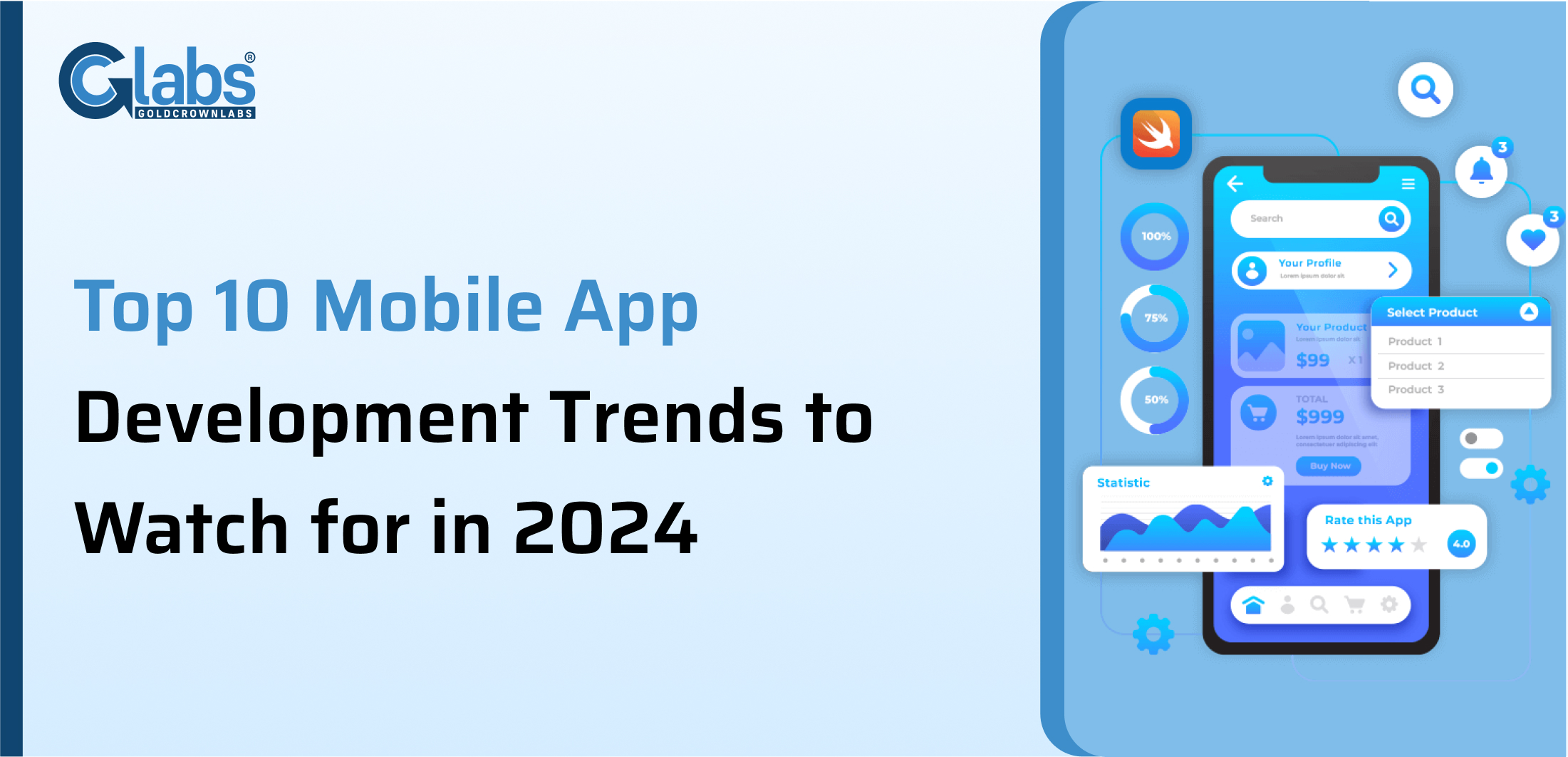Table of Contents
ToggleIntroduction:
What are the top mobile app development trends in 2024?
1. Integration of AI and machine learning: Apps are becoming smarter and easier to use thanks to machine learning (ML) and artificial intelligence (AI). Apps can now learn from user interactions to create more personalized experiences thanks to these technologies.
2. 5G Technology: The introduction of 5G networks is poised to revolutionize mobile applications by providing faster internet speeds and more reliable connectivity. This advancement will enable seamless high quality content, faster downloads, and smooth communication in real-time. Applications using 5G technology will have the ability to deliver more immersive and advanced experiences, including premium video calling and advanced augmented reality (AR) applications.
3. Augmented Reality (AR) and Virtual Reality (VR): The use of augmented reality (AR) and virtual reality (VR) in mobile applications is on the rise. AR superimposes digital data onto the physical world, improving gaming, shopping, and educational experiences. VR provides a fully immersive environment, making it ideally suited for gaming, training simulations, and virtual tours. Expect an increase in the number of apps that combine AR and VR capabilities as this technology becomes more feasible.
4. Internet of Things (IoT): The Internet of Things (IoT) is rapidly expanding, and mobile apps are at the forefront of this integration. Apps are increasingly being designed to connect with smart devices, such as home automation systems, wearables, and smart appliances. This integration allows users to control their environment and access data from various IoT devices directly through their mobile apps.
5. Wearable technology: Apps made particularly to track health data, give information, and allow communication are becoming available for smartwatches and fitness trackers. Apps that offer more sophisticated insights and features created especially for this device should become more prevalent as wearable technology advances.
6. Cross-platform development: Creating cross-platform apps with a single codebase is becoming straightforward thanks to tools like Flutter and React Native. Using this approach, developers can create consistent experiences across applications across multiple platforms while saving time and money. In 2024, cross-platform development will continue to be a popular method for more effective and efficient programming.
7. Enhanced App Security: App security is more important than ever due to growing concerns about data privacy. To protect user data, developers work hard to include robust security measures such as encryption, biometric authentication, and secure APIs. More apps need to have up-to-date security measures to protect users’ data and maintain trust.
8. Blockchain Technology: Blockchain technology is expanding beyond cryptocurrencies. They are being used to enhance app security, ensure transparency, and simplify policies. Apps using blockchain can provide secure transactions, verify authentication, and improve data integrity. By 2024, this technology will play an important role in building reliable and trustworthy applications.
9. Personalized User Experiences: Personalization is essential for grabbing people’s attention and retaining them. By 2024, apps will leverage analytics and data to provide highly customized experiences, such as personalized interfaces and content recommendations. Apps can provide more relevant and interesting interactions by learning about the preferences and behavior of their users.



